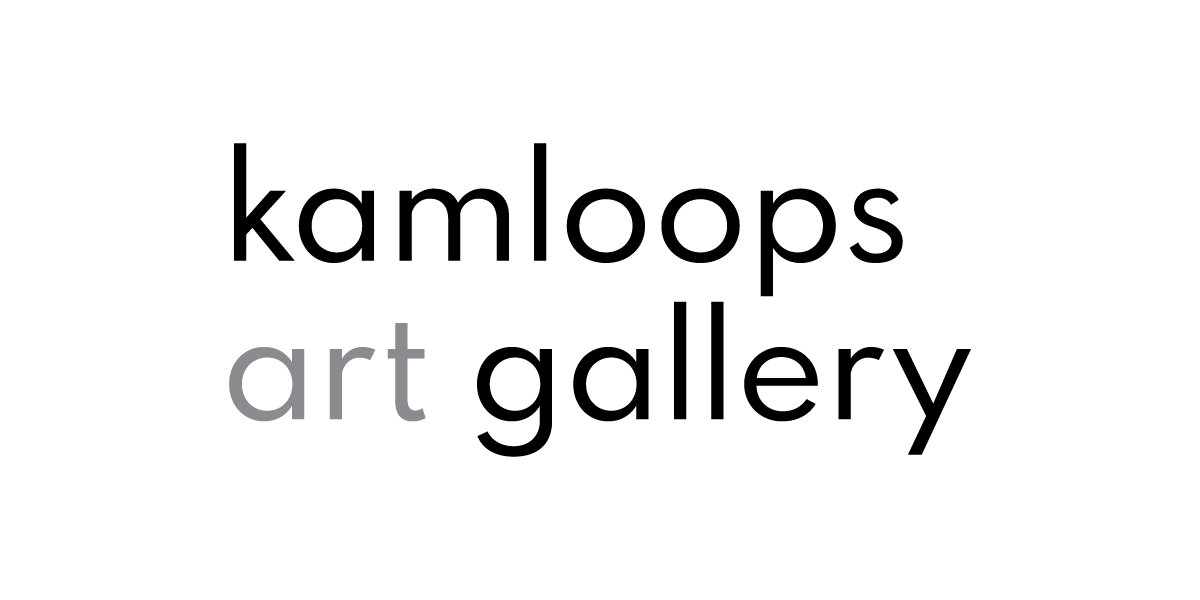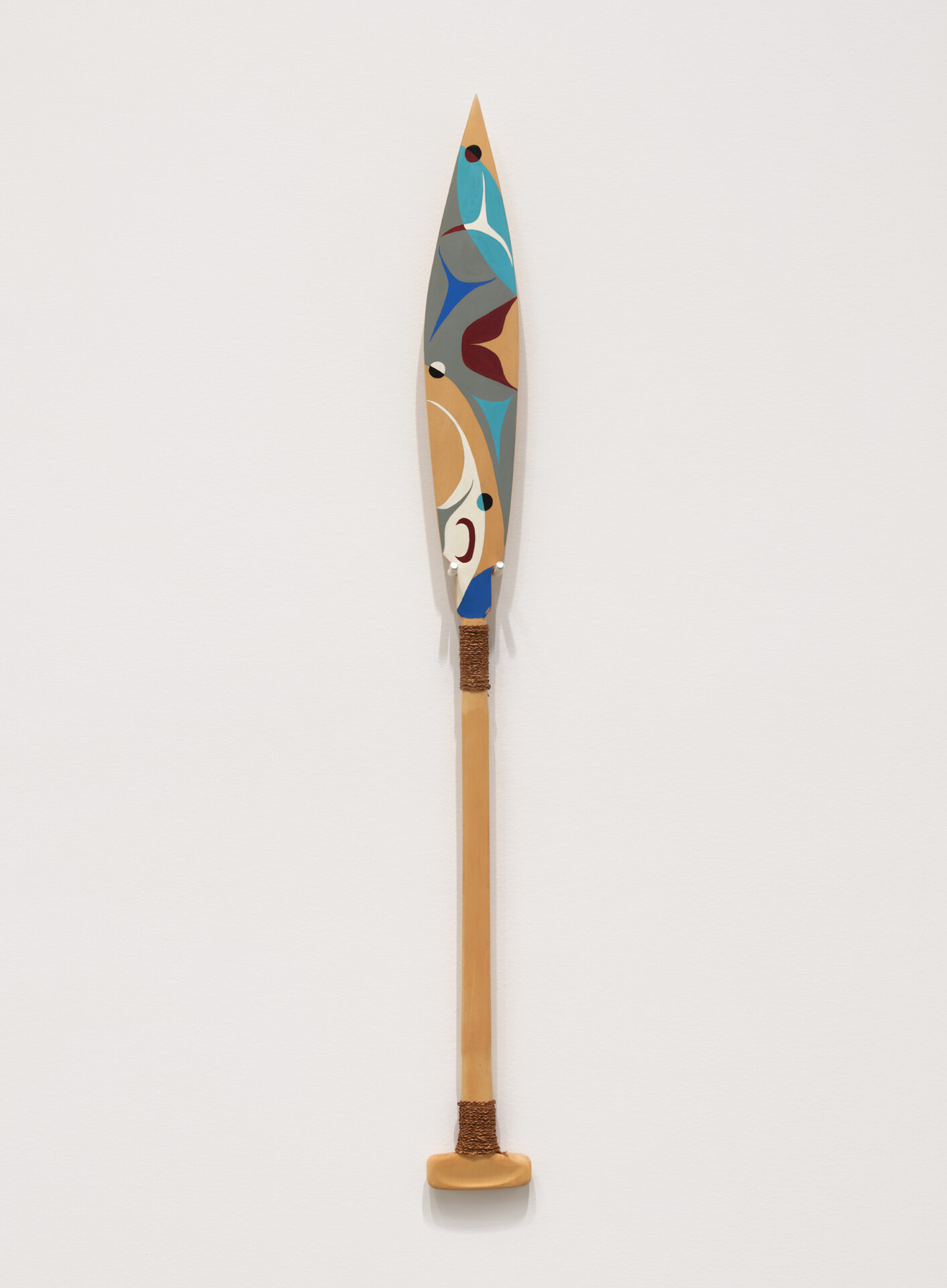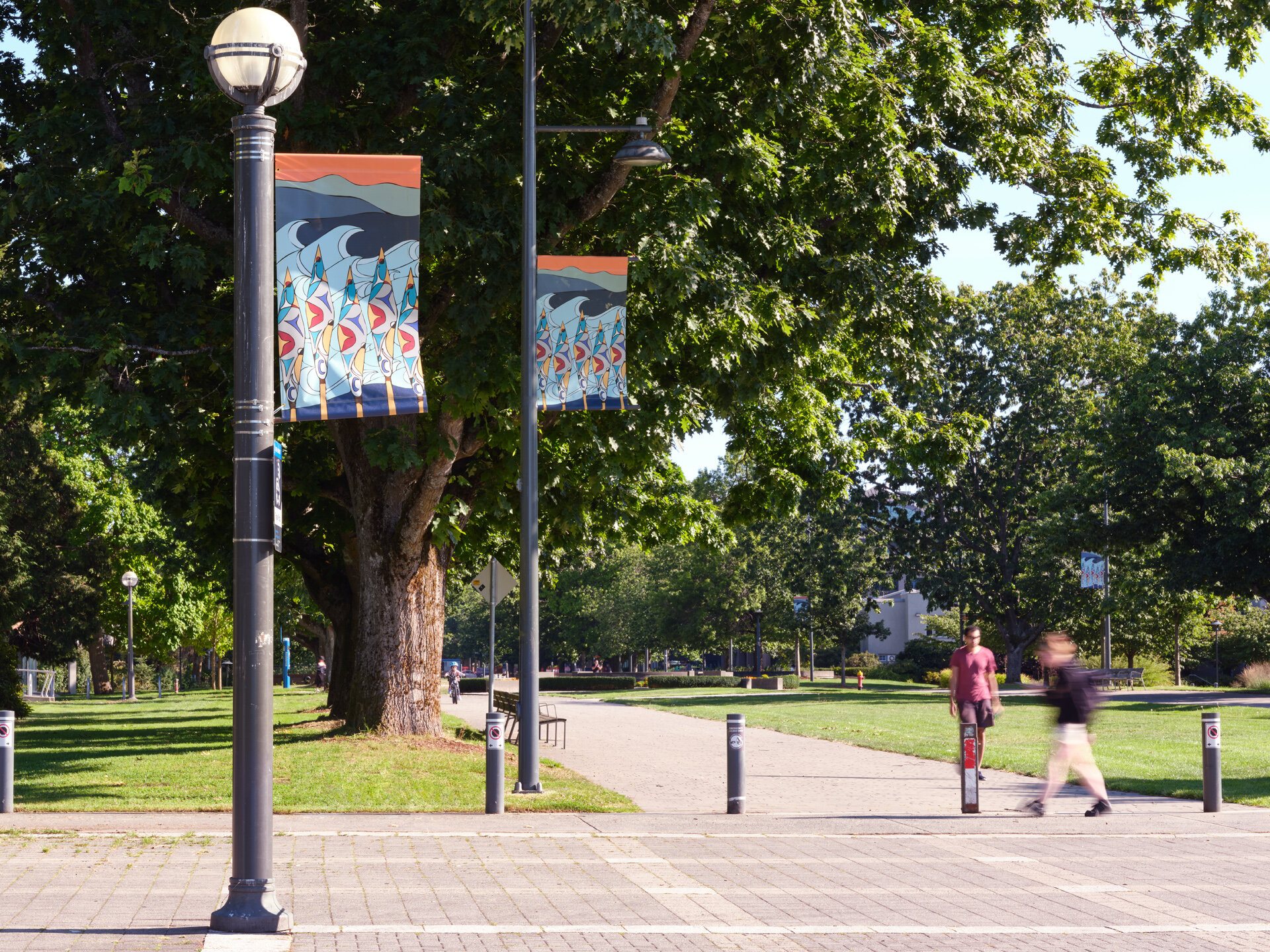Diamond Point + Jordan Point
(xʷməθkʷəy̓əm | Musqueam); (xʷməθkʷəy̓əm | Musqueam)
Vancouver BC 1994; Vancouver BC 1962
Both currently based in xʷməθkʷəy̓əm territory
wəɬ m̓ i ct q̓pəθət tə ɬniməɬ
2020
Cedar, paint
Collection of the Morris and Helen Belkin Art Gallery, University of British Columbia, purchased with support from the Canada Council for the Arts and the Morris and Helen Belkin Foundation, 2021
PART ONE
Four paddles (2020) arrive, one at a time, in the gallery suggesting a growing gathering over the course of the exhibition.
PART TWO
The paddles rest on a backdrop of land, sea and sky, drawn from imagery on banners that move in the wind at the University of British Columbia, in xʷməθkʷəy̓əm territory.
“This visual display is an act of communication between two communities, an abstract representation of cultural significance in Salish tradition, and symbolizes a journey of healing.”
~ Diamond Point
Diamond Point is a contemporary Coast Salish artist and a member of the Musqueam Indian Band. Point grew up on Reserve, and currently resides in Ladner with her daughter and husband. As an emerging artist, Point feels her artwork is current and belongs within the present, and she continues to develop and change her techniques and style throughout her experiences. In her work, Point respectfully incorporates traditional Coast Salish design elements to represent the beautiful teachings and history that her ancestors have passed down through generations since time immemorial.
In 2014, Point work was included in Claiming Space: Voices of Urban Indigenous Youth at the UBC Museum of Anthropology. In 2018, Diamond created designs for the UBC Totem Park residences that were named after the traditional Musqueam village sites c̓əsnaʔəm, həm̓ləsəm̓ and q̓ələχən. In 2019, Point’s artwork became the logo for the Humanities, Arts, Science, Technology Alliance and Collaboratory (HASTAC) conference at UBC, on the traditional, ancestral and unceded territory of the Musqueam people. Point’s work was also showcased at the Richmond Brighouse Canada Line Station, as part of the 2019 Capture Photography Festival.
Point currently studies at UBC in the NITEP Indigenous Teacher Education Program in the Faculty of Education. Point aims to work as a secondary social studies and art teacher, and feels fortunate to have had the opportunities to express her Indigenous identity and culture within many realms.
On Thursday, September 10, 2020, Coastal Wolf Pack (Tsatsu Stalqyu) interpreted Diamond Point’s banners as a musical score with a performance that began at James Hart’s Reconciliation Pole along UBC’s Main Mall and ended at the Belkin. At the Belkin, Elder Larry Grant greeted the performers, artists and audience with an official Musqueam welcome.
The artist would like to thank Elder Larry Grant for his generosity and time in discussing the work early in its development, and Jill Campbell for her insight and guidance in the process of conceiving the work.
Resources for Further Research
Additional information and writings about Diamond Point, compiled by the Morris and Helen Belkin Art Gallery team.
Watch an Interview with Diamond Point about her involvement in the Claiming Space exhibition
Learn about Canoe Journeys through the All Nations Paddles Up Website
Suggested Further Reading
Daehnke, Jon D. “A Heritage of Reciprocity: Canoe Revitalization, Cultural Resilience, and the Power of Protocol.” The Public Historian, vol 41, no 1 (2019): 64-77.
Diamond Point and Jordan Point, wəɬ m̓i ct q̓pəθət tə ɬniməɬ, 2018, cedar, paint. Collection of the artist. Installed at the Morris and Helen Belkin Art Gallery, University of British Columbia. Photo: Rachel Topham Photography.








